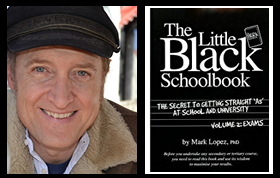Dr Mark’s The Meaning in a Nutshell
Shirley Jackson, We Have Always Lived in the Castle (1962)
Shirley Jackson’s We Have Always Lived in the Castle (1962) is a horror story set in a small town in Vermont, New England, in the north-east of the United States. It focuses on how the seriously psychologically disturbed (or criminally insane) are capable of unpredictable behaviour that can harm or kill, and those who unwittingly deal with them do so at their peril. The feelings of fear and dread that a horror story is intended to generate mostly come from the way that individuals do not realise the danger they are in when dealing with the members of the Blackwood family, especially the childlike eighteen-year-old Merricat (Mary Katherine Blackwood) whom the author depicts as appearing to be afflicted with paranoia and schizophrenia that can be homicidal.
The story also exhibits the author’s fascination with moral ambiguity. There is no clear demarcation between the bad and the good, with each character inviting evaluations that are ambivalent. For example, the main character and narrator, Merricat, gives the readers a disturbing view into the mind of an individual who is paranoid and schizophrenic. She frequently has homicidal fantasies about others and exhibits the capacity to kill when triggered by the feeling she has been unfairly punished. Yet she is also the victim of unsavoury prejudice and unprovoked bullying from the local villagers, and she is the target of calculated negativity from her materialistic relative, Cousin Charles, who seeks to divide the family and eject Merricat from her home so he can gain access to the family’s wealth. Merricat’s older sister, Constance, seems sweet-natured, caring and maternal, and she had to endure being unjustly accused and tried for murder. Yet she also exhibits disturbing codependent characteristics regarding her relationship with her sister Merricat, being willing to cover for Merricat knowing that she murdered all the other family members living in their home and wanted to kill Cousin Charles as well. Uncle Julian was left a pitiful brain-damaged invalid from surviving arsenic poisoning by Merricat, but he also exhibited a malicious streak, and he showed no grief for the deceased nor did he desire to see the murderer brought to justice despite his obsession with the details of the case.
In regards to the theme of moral ambiguity, the local villagers are, for the most part, treated as narrow-minded, judgemental, prejudiced, and prone to bullying those who are different or whom they fear. They even have the capacity to engage in mob violence. Their hostility is directed at the surviving members of the Blackwood family, one of whom they suspect is a murderer who went unpunished, mistakenly thinking this is Constance. However, it is also the case that one surviving member of the Blackwood family is highly dangerous, Merricat, and some community concern would be justified in her case, but, as the novel suggests, not the bullying or persecution. Meanwhile, some members of the community show a degree of Christian charity that can be found in small-town communities, such that displayed by Helen and Jim Clarke who visit the Blackwood’s home to try to help them as best they can, all to no avail.
Arguably, the moral ambiguity of the characters, and villagers, seems to reflect the author’s complex view of humanity and invites her readers to pause and reflect rather than be too quick to stereotype or judge others.
The horror story features a first-person narrative from the perspective of a seriously psychologically disturbed individual, Merricat, who is criminally insane. This artistically ambitious storytelling approach seems intended to reveal much about the nature of an individual afflicted by paranoia and schizophrenia through both what is said by this character or left unsaid. In what she says, the readers can see the deluded thinking, hateful homicidal fantasies, a fascination with the occult and poisons, an obsession with her codependent sister whom she seeks to control, hostility to strangers or visitors, resistance to change, snobbish arrogance, and a self-righteous response to disagreement or criticism. Through what the narrator does not say, the readers can determine an inability of such a person to accept that one’s hostile demeanour or behaviour may bring out negativity in others, and an inability to feel remorse for one’s crimes or to even realise that one had committed crimes.
Since the novel was written by a woman and features two female characters, Merricat and Constance, in more recent times it has attracted a favourable feminist reading. This perspective sees the novel as a story of two strong-willed, self-reliant women who resist the attempt by a man, Cousin Charles, to re-establish patriarchy in a family home that had been run by women since the patriarch, John Blackwood, died. Cousin Charles fails, and has to flee in the face of Merricat and Constance who re-establish a home dominated by women that operates in a manner that works for them.
Student resources by Dr Mark Lopez
© Mark Lopez 2023 All RIGHTS RESERVED
The purpose of the concise notes of Dr Mark’s The Meaning in a Nutshell is to provide much needed help to students seeking to unlock the meaning of the texts with which they have to deal. (More elaborate notes are provided in lessons as part of my private tutoring business.)
Subject: We Have Always Lived in the Castle meaning, We Have Always Lived in the Castle themes, We Have Always Lived in the Castle analysis, We Have Always Lived in the Castle notes
